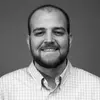Ultrasound helps ID nodules in atom bomb survivors
Researchers using thyroid ultrasonography have identified an increased presence of large nodules in the thyroids of atom bomb survivors, according to a study published in the February issue of JAMA Internal Medicine.
Ultrasonographic technology has been used in the past to detect thyroid cancer in children following the historical nuclear disasters at the Chernobyl and Fukushima power plants, and more recent advancements have shown small thyroid nodules to be common in many Japanese adults and children. Until recently, however, very few studies have focused on how radiation exposure at a young age continues to effect the thyroid in later stages of life.
To do so, the research team led by Misa Imaizumi, MD, PhD, of Nagasaki University in Japan, examined 3,087 atomic bomb survivors from Hiroshima and Nagasaki who participated in the Adult Health Study at the Radiation Effects Research Foundation in Japan. The participants had a mean age of 68 and were all less than 10 years of age at the time of exposure.
By conducting examinations using thyroid ultrasonography, the team was able to determine that 17 percent of atomic bomb survivors have nodules considered to be large in size (greater than 10mm in diameter), all of which were significantly associated with radiation exposure. “We observed significant radiation effects on thyroid nodules 62 to 66 years after radiation exposure,” wrote Imaizumi et al. “Risk estimates for atomic bomb survivors exposed in childhood (before the age of 10) were higher than for those exposed at all ages … particularly for malignant tumors.”
Nodules less than 10mm in size are more common in the general population and not associated with past radiation exposure, a fact the researchers were able to discern thanks to the accuracy of results derived through ultrasound imaging of the thyroid.
“Because of recent advances in the quality of ultrasonographic imaging, small thyroid nodules are being detected more frequently than are nodules that are 10mm or larger in adults as well as children,” the authors wrote. “The major strengths of this study were the availability of estimated thyroid radiation doses and nearly complete ascertainment of thyroid nodule cases, with few false negative cases using standardized ultrasonographic examination.”
